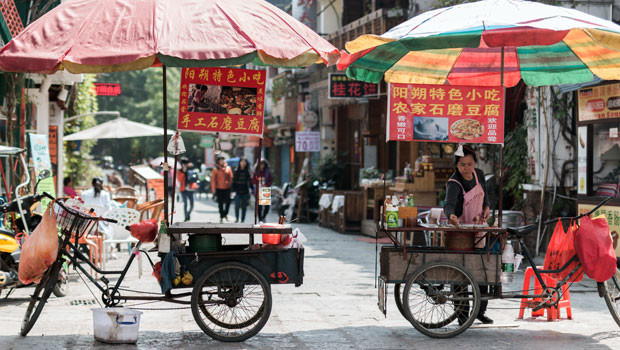Lockdowns dent Chinese retail sales

Retail sales in China continued to fall last month, data showed on Wednesday, as the effects of Beijing’s strict zero-Covid policy weighed on consumption.
According to the National Bureau of Statistics, retail sales fell 6.7% year-on-year. Month-on-month, sales were broadly flat.
However, that was an improvement on April’s 11.1% slump, when much of Shanghai remained under stringent lockdown conditions. Analysts had also expected a sharper fall, of around 7.1%.
Industrial production data, meanwhile, released alongside the retail sales figure, improved 0.7% year-on-year, contrary to expectations for a fall of around the same amount, after declining 2.9% in April. Month-on-month it rose 5.6%.
The NBS attributed the rise to growth in production of new energy vehicles. Manufacturing rose 0.1% year-on-year, following a 4.6% decline in April, helping to offset slower growth in mining and utilities.
Fixed asset investment rose 6.2%, marginally ahead of consensus for a 6.0% rise, but a slowdown on April’s rate of 6.8%.
Craig Botham, chief China+ economist at Pantheon Macroeconomics, said: "China is recovering from the zero-Covid lockdown more rapidly than expected, at odds with the continued month-on-month decline implied by the May PMIs. But much ground is left to be made up if a quarter-on-quarter decline is to be avoided.
"Retail sales strength came as the biggest surprise to us, given a still elevated level of stay at home orders and mobility restrictions in May, and the services PMIs.
"Overall, the May data are encouraging but do not, on their own, rule out a quarter-on-quarter decline in GDP. It remains to be seen how much momentum can be preserved from the initial catch up, and also whether reopening can continue."
Tommy Wu, lead China economist at Oxford Economics, said: "Consumption remained weak as households continued to stay cautious against Covid infection, with labour market weakness compounding the problem.
"We anticipate a recovery in the second half of this year, as policy stimulus takes effect. But risks to the outlook are tilted to the downside, as the economic outlook will depend on the extent of disruption from Covid restrictions and whether major cities avoid full lockdowns."
The People’s Bank of China also left the key one-year medium-term lending facility interest rate on hold on Wednesday, at 2.85%.
Iris Pang, chief economist, Greater China, at ING, said: "The PBoC has kept the rate unchanged since February, even though China experienced a deep economic slowdown in April and May. Unlike most other economies in the region, China is not suffering from high inflation either.
"But the central bank’s decision does not imply there will be no change in the overall interest rate environment in China.
"Activity data pains an economic recovery picture in May, but only a slow one."